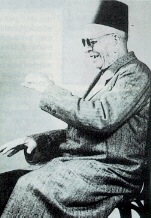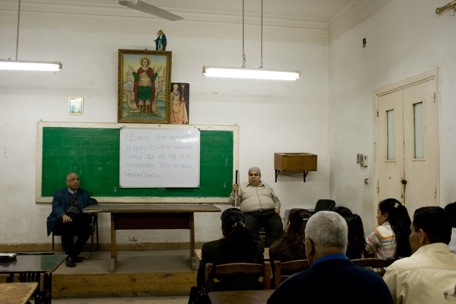COPTIC MUSIC
The Copts trace themselves back to an early stage of Egyptian history. The self-designation "Copt" respectively "Copts" or "Coptic" points to these origins, as derived from the Greek word "Aigyptos". Coptic tradition ascribes the founding of its church to the Evangelist Mark.
Ecclesiastical Coptic music is the language of the soul to praise God. This art form of spiritual music signifies the liturgical music of the church as well as the religious hymns performed both inside and outside of the church contexts.
Coptic music is very ancient and the conservative nature of the Coptic Church has consequently preserved it without, or perhaps with a small measure of change. Despite the fact that Coptic music is primeval, it still remains alive in Orthodox Churches today. It offers joy, peace, stimulation and fulfillment to whomever takes interest in it.
Coptic music is deep, harmonic and well-defined songs meant to express the innermost emotions of the praising spirit. It does not follow musical notes nor dedicated rhythm but rather, it translates the pulses of the spirit. No doubt Coptic music was the creation of highly spiritual people guided by the gifts and inspirations that were pertinent to the apostolic period from the first century of Christianity.
For centuries, Coptic music scholars and many archeologists tried to discover the roots of Coptic music. They agreed that there are three sources which might have influenced this heritage: the Jews, the Greeks and the ancient Egyptians.
The main characteristics of Coptic music have been adopted from the music of the ancient Egyptians of whom the Copts are direct descendents. Researchers have found traces from the ancient Egyptian music influencing the church in early centuries in different aspects. Ancient Egyptians were characterized by the "melismata" (singing many notes over one of the seven vowels which were called magic vowels) and used to give strong feelings of piety and humility for religious occasions. Coptic music is above all considerations vocal dependent.
Scholars found the Antiphonal singing system between two groups from cantors.
The use of the cymbals (daff) and triangles (muthallath) in churches was certainly introduced in the Middle Ages, long after the era of early Christianity.
The cymbals are a pair of slightly concave metal disks (usually silver) about 18 cm in diameter, with a cupped center 3 cm in depth. A hole in the center of each disk permits the passage of a string held in place by a wooden pin that acts as a handle for manipulating the cymbals. When the hand cymbals and triangle are played simultaneously, intricate rhythmic patterns emerge, and as these instruments accompany the varied meters of the vocal music, a complex and distinct polyrhythm is produced.

(Cantor Mikhail El-Batanouny, photography by Hans Hickmann)
“This ancient Coptic music…” says Newlandsmith: “…has wide ranges. It includes the music of the Liturgy, with many extra hymns for special occasions.”
The Coptic Church has six musical tunes namely; Annual (throughout the year), Kiahky (the month of Christmas), Fasting (7 weeks of the lent), Shaaniny (on Palm Sunday), Hazayny (during the Holy Week) and Farayhy (Joyful).

At the Institute of Coptic Studies - Departement of Coptic Music and Hymns (Center of Dr. Ragheb Moftah for Coptic Music and Ecclesiastical Hymns) - students learn in the traditional oral way from Cantor Gad Luis.
Hymn in Bright Saturday
"He who has an ear, let him hear what the Spirit says to the churches"
Transcription: (fee et e oo on mashg emmof e soatem maref soatem, je oo pe e te pi epnevma goa emmof en ni ekkleesia)
Dr. Michael Ghattas
Head of the Coptic Music and Hymns Department
Institute of Coptic Studies, Cairo
Bibliography:
- Newlandsmith, Ernest, The Ancient Music of the Coptic Church (A lecture delivered at the University Church, Oxford), London: New Life movement. 11 pp., musical examples. (reprint of 1931, with an introduction and a final section added to it).
- Borsai, Ilona, music in the Coptic rite, in: The New Grove Dictionary of Music and Musicians, Vol. 1980, pp. 370-374.
- Hickmann, H., La cliquette, un instrument de percussion égyptien de l'époque copte, in: Bulletin de la Societé d'Archéologie Copte, XIII (1948 – 1949), p. 1.
Moftah, R., Coptic Music, in: Bulletin de l'Institut des Études Coptes 1958, pp. 42-53.
- Smith, E. N., The Ancient Music of the Coptic Church (London 1931).